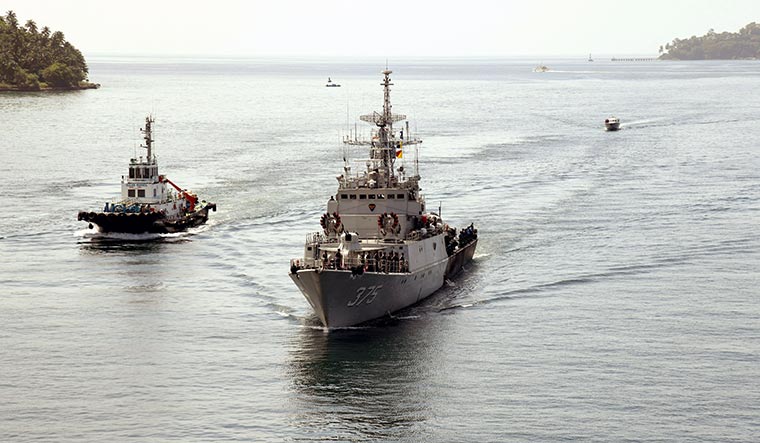“If you know your enemy and yourself, you need not fear the result of a hundred battles. If you know yourself but not the enemy, for every victory gained, you will also suffer a defeat. If you know neither the enemy nor yourself, you will succumb in every battle,” said ancient Chinese military strategist Sun Tzu.
So let us know what China, which would remain our biggest concern, would likely be in 2047.
When free India turns 100 in 2047, Hong Kong would have completed its 50 years of ‘free’ existence, and would have to merge with China, fulfilling the arrangement that was made in 1997 when it got Hong Kong back from Great Britain after a 100-year lease. By then, something significant even on the Taiwan front also cannot be ruled out. Since one has to consider the worst-case scenario while planning, let us assume that in 2047 both Hong Kong and Taiwan would be under China’s control. This means China would have effective control of the Strait of Malacca, through which more than 20 per cent of the global trade and 60 per cent of China’s maritime trade take place.
China is aware how vulnerable it is to a naval blockade of Malacca. Back in 2003, president Hu Jintao had termed it the ‘Malacca dilemma’. China’s current proactive actions and overtures aimed at dominating the Indian and Pacific Oceans through the strategically located South China Sea can thus be easily explained as attempts to create alternatives and break free of any possible blockade of the Strait of Malacca.
This has led to certain major regional and global permutations and combinations getting worked out by various affected actors in the Asia-Pacific region. The Quad (Quadrilateral Security Dialogue)―comprising the United States, Australia, India and Japan―has emerged as one such association of the four major global economies getting threatened, or feeling insecure, by China’s domination of the Asia-Pacific. The Quad members, too, have stakes in the Strait of Malacca. Being thousands of miles apart, their shortest approach to one another is through the Malacca bottleneck.
If the basic philosophy of the Quad is to somehow contain China, then its peacetime economic and wartime military significance need to be effectively taken cognisance of. Thus, India automatically becomes the most important player as a result of its geographical location between the Europe-Middle East and the East Asia-Asia-Pacific regions. The importance of Hong Kong and Taiwan lies in being major global manufacturing hubs with port facilities in the Strait of Malacca. Therefore, the Quad as a group must start looking for a viable option to counter China effectively in the region as part of its preparation for 2047.
There are two major requirements to achieve this. First, a port city has to be developed as an alternative to Hong Kong; second, Quad members should find a maritime route that can be an alternative to the Strait of Malacca.
Andaman and Nicobar Islands offer possibilities. India has already started working on developing the archipelago, especially the Greater Nicobar Islands. The project costing approximately $10 billion includes the Galathea Bay international container transhipment terminal, the Greater Nicobar international airport, the Greater Nicobar gas and solar power plant and two greenfield coast cities.
But these are not enough. Rather than restricting the development merely to these presently envisaged goals, development vision needs to be expanded to make Greater Nicobar a viable alternative to Hong Kong by 2047. Hence the development of the Greater Nicobar should be a priority and responsibility of the Quad as such, rather than only of India.
For the second requirement―to develop a maritime route that can be an alternative to the Strait of Malacca―one needs to look elsewhere. That is where Indonesia falls into the strategic picture. Greater Nicobar is closer to the western Sumatra region of Indonesia than any piece of Indian territory. The necklace-shaped island country, extending from the Indian Ocean to the Pacific Ocean, makes the Quad contiguous. The Strait of Malacca passes through it for the major portion of its length. In addition, it has a few strategically important straits like Sunda, Lombok and Sumba which can prove to be an effective alternative to Malacca, if necessary. This route will not only help provide an option to bypass the Strait of Malacca in case of any Chinese blockade, but also will act as an additional maritime option that will reduce the existing congestion on the Malacca route.
In short, when the erstwhile Asia-Pacific region is being increasingly viewed as Indo-Pacific, it cannot be complete without Indonesia. Thus, the Quad must plan to get Indonesia on board at the earliest even if it entails a change of name altogether.
The author, a strategic affairs expert, serves as officer on special duty to the lieutenant governor of Delhi.



